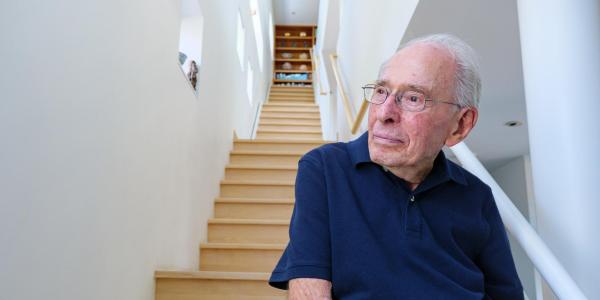 Graduate student Barbara MacFerrin had never seen a bear in the wild in Colorado. In November, she went to the Arctic and saw a dozen polar bears.
Graduate student Barbara MacFerrin had never seen a bear in the wild in Colorado. In November, she went to the Arctic and saw a dozen polar bears.
As part of a team led by Jennifer Kay, assistant professor in the Department of Atmospheric and Oceanic Sciences (ATOC) at CU Boulder, they spent a week on the Arctic tundra making educational videos to help teach students about climate science.
MacFerrin, who is working toward a master’s degree in the ATLAS Institute's Technology, Media and Society program, was the team’s videographer. Seeing polar bears in their habitat was a highlight personally and professionally for MacFerrin, who has developed an interest in addressing the impacts of climate change on Arctic and alpine communities through her videos and photographs.
“The whole experience of going to the Arctic and seeing the polar bears and the northern lights was so rewarding,” she said. “At the same time I felt despondent. The bears were clearly hungry and wanted to be out on the sea ice hunting, but the ice was late forming this year. We witnessed a polar bear cannibalizing the remains of another, which is something that happens when they’re stuck on land with limited food resources.”
Kay’s team traveled to Churchill, Manitoba—known as the polar bear capital of the world—where  each fall polar bears outnumber people when the bears gather along the shores of Hudson Bay to wait for sea ice to form. Listed as a threatened species, polar bears depend on sea ice to hunt for seals, but because the Arctic is rapidly warming, their hunting grounds are dwindling.
each fall polar bears outnumber people when the bears gather along the shores of Hudson Bay to wait for sea ice to form. Listed as a threatened species, polar bears depend on sea ice to hunt for seals, but because the Arctic is rapidly warming, their hunting grounds are dwindling.
The 5-minute videos explore specific climate science learning goals for non-science majors. The team is making two versions of the videos: one with polar bears and one without. Using the videos, the team will explore the following questions: Does incorporating polar bears into the classroom help with student engagement? Does including polar bears as an emotional hook improve student learning of core science concepts?
An atmospheric scientist, Kay is a fellow at the Cooperative Institute for Research in Environmental Sciences (CIRES), a research institute sponsored jointly by CU Boulder and the National Oceanic and Atmospheric Administration to study Earth systems.
Kay’s team collaborated with Polar Bears International, a nonprofit organization whose mission is to conserve polar bears and the sea ice they depend on. The trip was funded by a grant awarded to Kay as a National Science Foundation CAREER Award recipient.
Joining Kay on the trip were Ariel Morrison, a doctoral student in ATOC, and Anne Gold, CIRES geoscience education specialist.
“We are researching the effectiveness of an emotional hook in the classroom when teaching climate science,” Kay said. “Polar bears are an iconic representation of climate change, and they might help students engage better with the material, which in turn might improve their learning. But polar bears are also distant to many learners, so maybe they won’t be engaging for students. Either way, our research will measure the impact of polar bears on student learning and engagement.”
The project required long-range recording of polar bears in the Arctic autumn light. With close to a thousand polar bears roaming around near Churchill, it can be hazardous for people to go out alone. Whenever Kay’s team went out to film, they were accompanied by a bear guard with a gun to help keep them safe. In town, they traveled in groups and carried bear spray to discourage dangerous bear encounters.
To travel onto the tundra, they rode in huge tundra buggies—imagine a monster truck with a school bus on top. Since adult male polar bears can reach over 10 feet tall when standing on their hind legs, the buggies have to be tall for the safety of the travelers.
“The effects of climate change on the Arctic are especially pronounced,” said Morrison, who studies the relationship between Arctic clouds and sea ice and helped write the video scripts. “Climate change is a frightening thing that’s happening to the planet, and it’s happening to everyone on Earth. That’s not to say that all hope is lost. We have a lot of great technology at our disposal. When people put their minds to doing something about the changing climate, it can make an impact.”
The Department of Atmospheric and Oceanic Sciences at CU Boulder provides undergraduate and graduate education and training to students interested in weather and climate science. The research and education mission of the department is to examine the dynamical, physical and chemical processes that occur in the atmosphere and the ocean.
“This educational research project is an example of how we are working across departments to improve science education at CU Boulder,” Kay said. “I spend a lot of time thinking about how best to communicate science to my students.”



